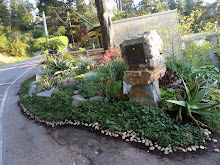
Most herbaceous types are hardy from Zone 8 to Zone 2, with some exceptions.
The best-known herbaceous species isPaeonia lactiflora, also known as the Chinese peony because of extensive breeding work done by Chinese horticulturalists. The popular double-flowered cultivars that most of us grow almost all come from this species.
Most varieties flower for about a week in late spring to early summer, but you can extend the period of bloom for six weeks by choosing early, mid- and late-season cultivars.
Flower colors range from white and yellow to shades of red, pink and mauve - any color except blue. As for scent, most double flowering types are more fragrant than singles, and pinks tend to be more fragrant than reds.
Steps to peony success
Soil and light: Peonies grow two to four feet tall and thrive in sunny flowerbeds and well-drained soils. Although they tolerate a wide range of soil types, you'll have the best success with good soil rich in organic matter.
Feeding: These perennials are heavy feeders, but whether or not you need to add fertilizer depends on the type of soil you have. Clay soils tend to be more fertile than sandy soils. With sandy soils, adding nutrients will help ensure your plants thrive.
It's better to use compost or well-rotted manure to feed perennials than chemical fertilizers. Top dressing around your peonies each fall with compost does a lot to improve the soil structure as well as its nutritional content, however, don't dump the compost directly on the crown of the plant, but rather in a circle around the plant.
If compost isn't available, use a granular fertilizer higher in phosphate and potassium than nitrogen and scratch it into the soil around the crown in early spring and fall.
We have two peonies and just one flower for each peony/year. The fragrant is so wonderful.

No comments:
Post a Comment